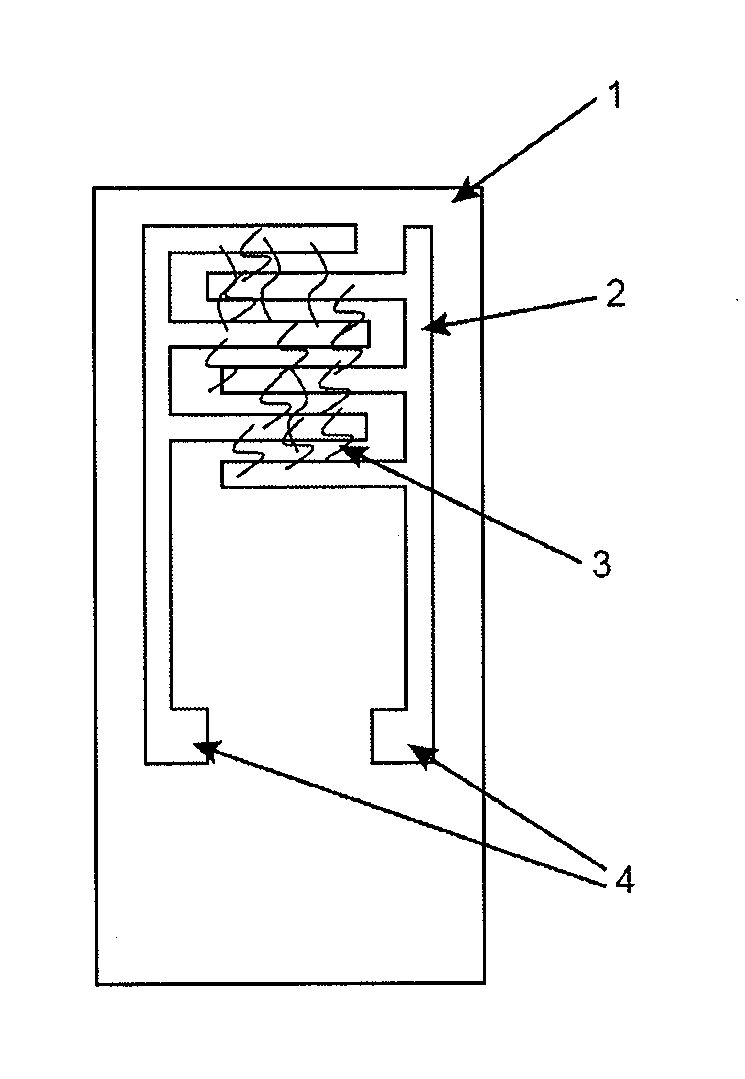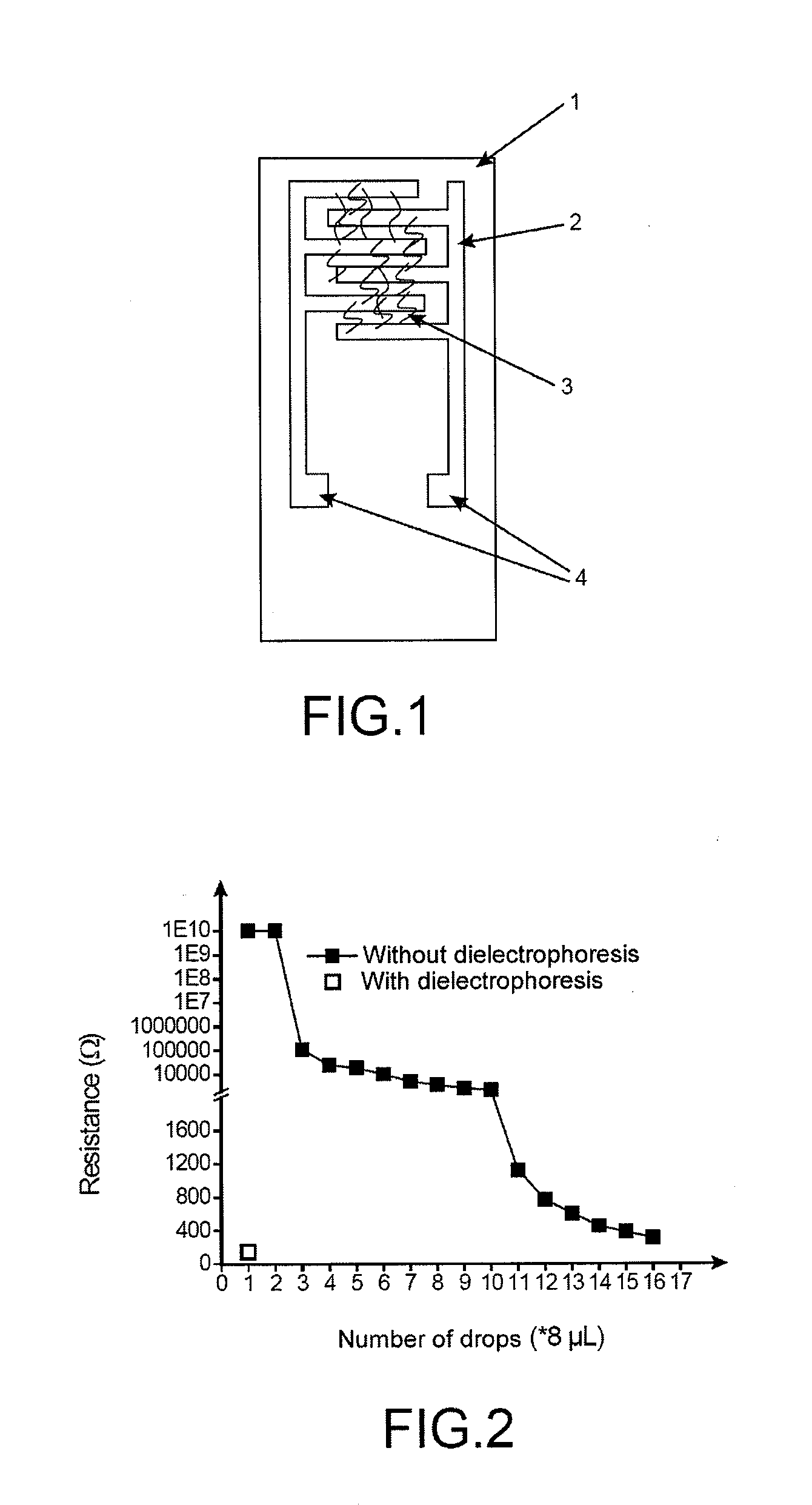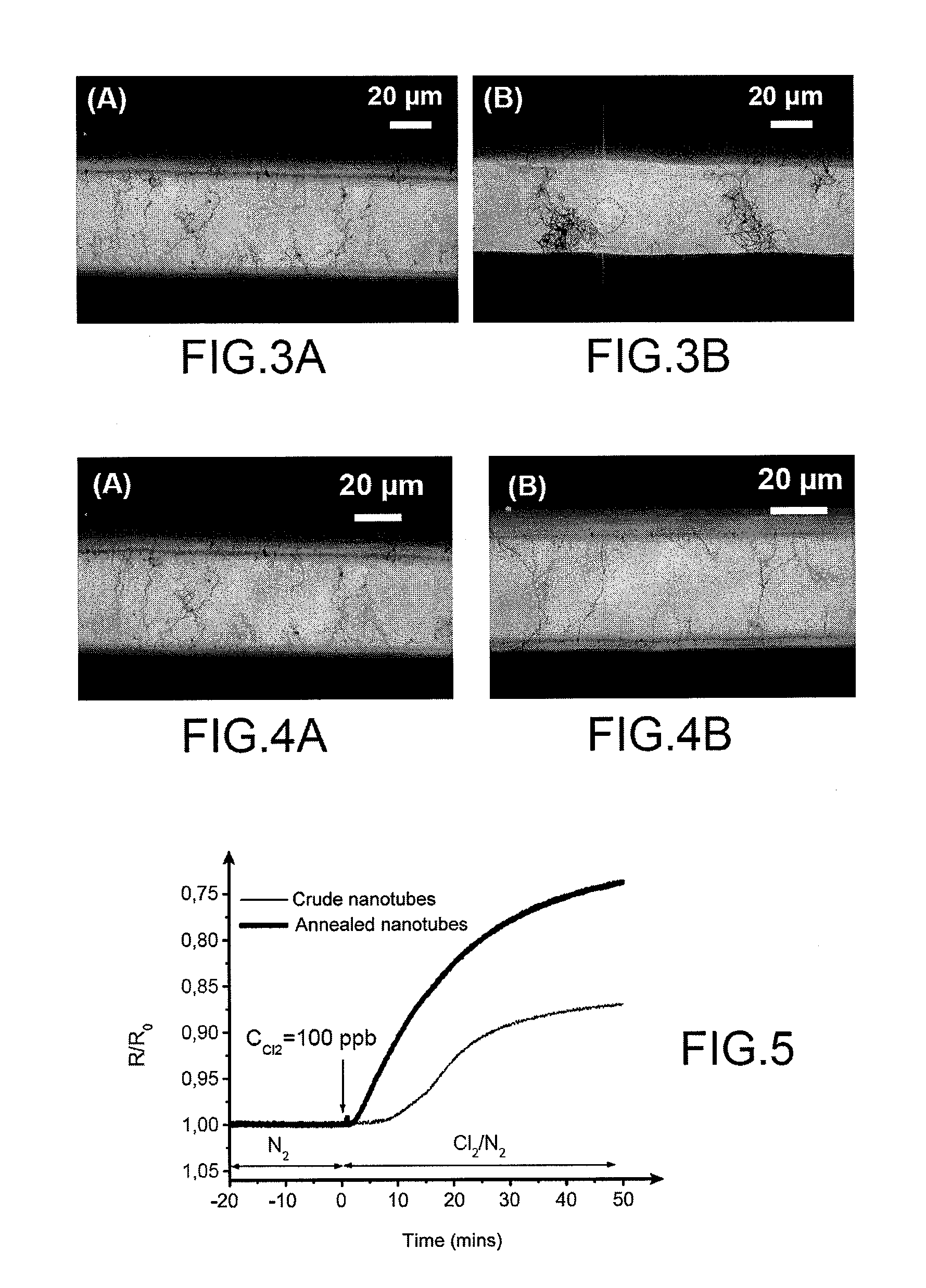Chemical sensors containing carbon nanotubes, method for making same, and uses therof
- Summary
- Abstract
- Description
- Claims
- Application Information
AI Technical Summary
Benefits of technology
Problems solved by technology
Method used
Image
Examples
example 1
Preparation of Suspensions of Long Multi-Sheet Carbon Nanotubes
[0171]The suspensions of different concentrations (1˜100 mg / L) of long multi-sheet carbon nanotubes (400 μm) in isopropanol are prepared with an ultrasonic probe. In this example, the suspensions are subject to ultrasounds for 8 minutes with a power of 250 W. Up to 10 mg / L, the suspensions are (visibly) stable for several hours.
[0172]For more concentrated suspensions, flocculation or sedimentation of the nanotubes appears after a few tens of minutes. The suspensions having a nanotube concentration of 5 to 10 mg / L are used for making sensors based on the use of non-functionalized nanotubes.
[0173]The suspensions of functionalized nanotubes, as for them, are stable in isopropanol for a few hours or even a few days at concentrations of less than 100 mg / L. The suspensions having a nanotube concentration in the range from 20 to 100 mg / L are used for preparing sensors based on functionalized nanotubes.
example 2
Effect of Dielectrophoresis During the Preparation of Sensors According to the Invention
[0174]The applied dielectrophoresis conditions are a 5 MHz sinusoidal 20 V peak-to-peak voltage.
[0175]The initial resistance of a sensor depending on the number of drops (8 μL per drop) deposited on the electrodes with and without dielectrophoresis was investigated (FIG. 2). The nanotube concentration for the suspension used for both sensors is 5 mg / L.
[0176]In this example, with dielectrophoresis, it is possible to reduce by a factor of 16 the number of deposited drops in order to attain the proper initial resistance value.
[0177]Further, the optical microscopy image of multi-walled carbon nanotubes deposited on the interdigitated electrodes by dielectrophoresis, after depositing a suspension drop, reveals that the nanotubes are quasi individual and have a preferential orientation perpendicular to the electrodes (FIG. 3A). The nanotubes are, on the contrary, organized as a cluster as viewed on the...
example 3
Effect of Annealing on Carbon Nanotubes
[0178]This example aims at comparing a device based on > carbon nanotubes and a device based on carbon nanotubes annealed at 2,000° C. for one hour under argon.
[0179]FIGS. 4A and 4B are optical microscopy images obtained for respectively > or > multi-walled carbon nanotubes, deposited on the interdigitated electrodes by dielectrophoresis after depositing one drop of suspension (5 mg / L).
[0180]The sensitivity of such sensors based on > and > nanotubes towards chlorine diluted in nitrogen at a content of 100 ppb was also compared. The results shown in FIG. 5 show that the sensitivity (S═(R—R0) / R0)*100) at 50 mins of the sensor based on > nanotubes is twice greater, as compared with that of the sensor based on > nanotubes (26 versus 12.5).
[0181]Further, the sensitivity (S═(R—R0) / R0)*100) towards chlorine diluted in nitrogen at a content of 27 ppb of a sensor based on > nanotubes and measured at 50 minutes is 7% (FIG. 6).
PUM
| Property | Measurement | Unit |
|---|---|---|
| Length | aaaaa | aaaaa |
| Length | aaaaa | aaaaa |
| Electric properties | aaaaa | aaaaa |
Abstract
Description
Claims
Application Information
 Login to View More
Login to View More - R&D
- Intellectual Property
- Life Sciences
- Materials
- Tech Scout
- Unparalleled Data Quality
- Higher Quality Content
- 60% Fewer Hallucinations
Browse by: Latest US Patents, China's latest patents, Technical Efficacy Thesaurus, Application Domain, Technology Topic, Popular Technical Reports.
© 2025 PatSnap. All rights reserved.Legal|Privacy policy|Modern Slavery Act Transparency Statement|Sitemap|About US| Contact US: help@patsnap.com



